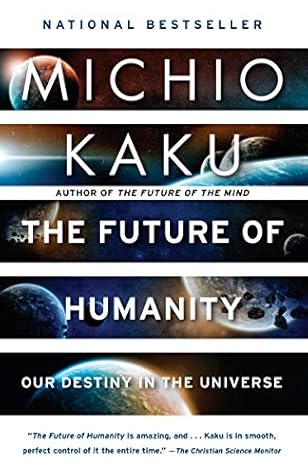More on this book
Community
Kindle Notes & Highlights
by
Michio Kaku
Read between
March 7 - April 8, 2021
Geneticists have noticed the curious fact that any two humans have almost identical DNA. By contrast, any two chimpanzees can have more genetic variation between them than is found in the entire human population. Mathematically, one theory to explain this phenomenon is to assume that, at the time of the explosion, most humans were wiped out, leaving only a handful of us—about two thousand people.
If we scan all the life-forms that have ever existed on the Earth, from microscopic bacteria to towering forests, lumbering dinosaurs, and enterprising humans, we find that more than 99.9 percent of them eventually became extinct. This means that extinction is the norm, that the odds are already stacked heavily against us. When we dig beneath our feet into the soil to unearth the fossil record, we see evidence of many ancient life-forms. Yet only the smallest handful survive today. Millions of species have appeared before us; they had their day in the sun, and then they withered and died. That
...more
We also face the possibility that the supervolcano under Yellowstone National Park may awaken from its long slumber, tearing the United States apart and engulfing the Earth in a choking, poisonous cloud of soot and debris. Previous eruptions took place 630,000, 1.3 million, and 2.1 million years ago. Each event was separated by roughly 700,000 years; therefore, we may be due for another colossal eruption in the next 100,000 years.
History reveals that scientific revolutions come in waves, often stimulated by advances in physics. In the nineteenth century, the first wave of science and technology was made possible by physicists who created the theory of mechanics and thermodynamics. This enabled engineers to produce the steam engine, leading to the locomotive and the industrial revolution. This profound shift in technology lifted civilization from the curse of ignorance, backbreaking labor, and poverty and took us into the machine age.
In the twentieth century, the second wave was spearheaded by physicists who mastered the laws of electricity and magnetism, which in turn ushered in the electric age. This made possible the electrification of our cities with the advent of dynamos, generators, TV, radio, and radar. The second wave gave birth to the modern space program, which took us to the moon.
In the twenty-first century, the third wave of science has been expressed in high tech, spearheaded by the quantum physicists who invented the transistor and the laser. This made possible the supercomputer, the internet, modern telecommunications, GPS, and the expl...
This highlight has been truncated due to consecutive passage length restrictions.
we will discuss the effort to create a permanent moon base and to colonize and terraform Mars. To do this, we will have to exploit the fourth wave of science, which consists of artificial intelligence, nanotechnology, and biotechnology.
Thanks to the Human Connectome Project, which will map every neuron in the human brain, one day we may be able to send our connectomes into outer space on giant laser beams, eliminating a number of problems in interstellar travel. I call this laser porting, and it may free our consciousness to explore the galaxy or even the universe at the speed of light, so we don’t have to worry about the obvious dangers of interstellar travel.
I sometimes think about how easy it is for a nation to slip into complacency and ruin after decades of basking in the sun. Since science is the engine of prosperity, nations that turn their backs on science and technology eventually enter a downward spiral.
The experience of weightlessness is caused by the fact that everything falls at the same rate. So an astronaut inside the spaceship would fall at the same rate as his ship and experience the illusion that gravity has been turned off.)


